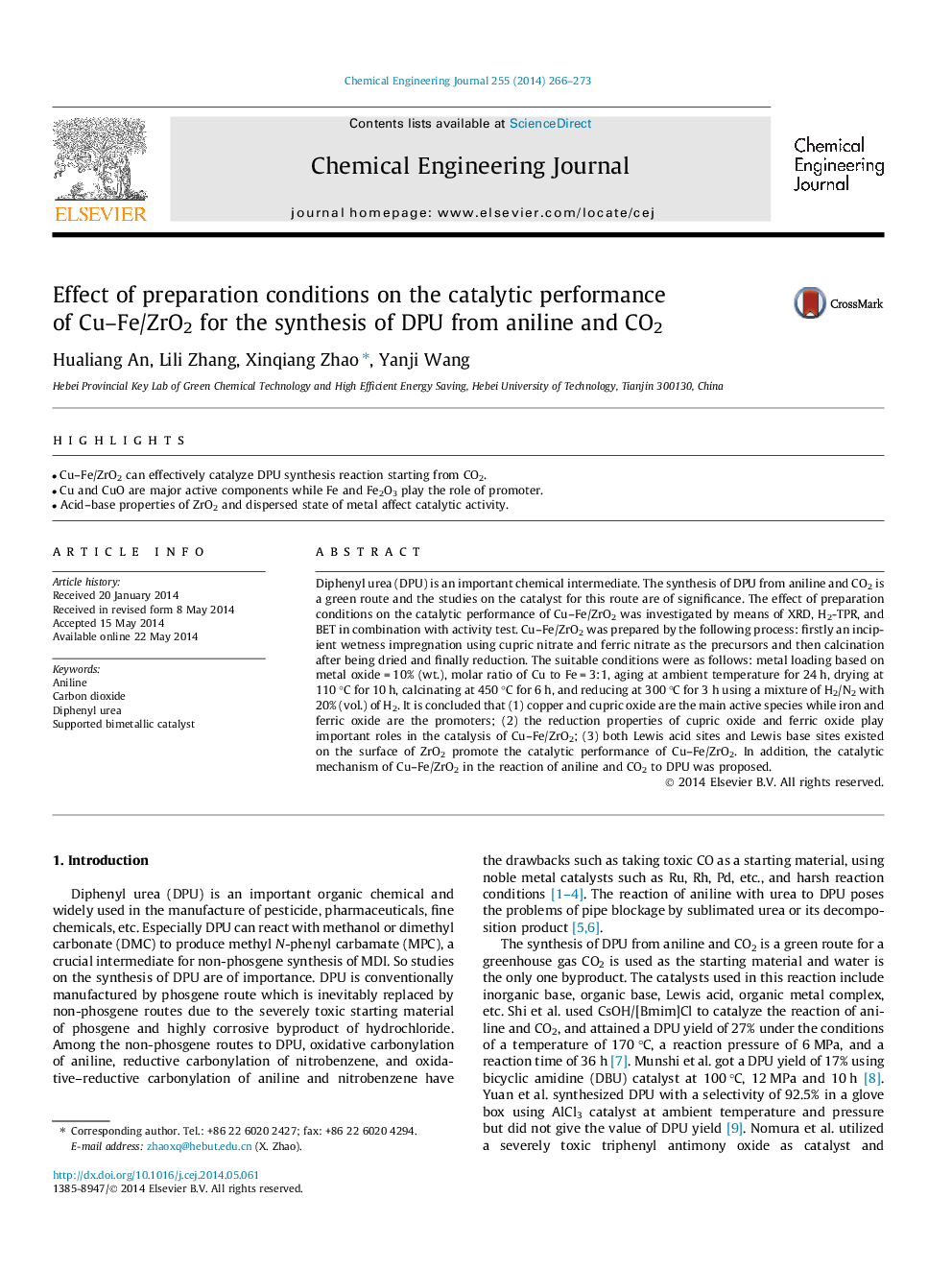| Article ID | Journal | Published Year | Pages | File Type |
|---|---|---|---|---|
| 147100 | Chemical Engineering Journal | 2014 | 8 Pages |
•Cu–Fe/ZrO2 can effectively catalyze DPU synthesis reaction starting from CO2.•Cu and CuO are major active components while Fe and Fe2O3 play the role of promoter.•Acid–base properties of ZrO2 and dispersed state of metal affect catalytic activity.
Diphenyl urea (DPU) is an important chemical intermediate. The synthesis of DPU from aniline and CO2 is a green route and the studies on the catalyst for this route are of significance. The effect of preparation conditions on the catalytic performance of Cu–Fe/ZrO2 was investigated by means of XRD, H2-TPR, and BET in combination with activity test. Cu–Fe/ZrO2 was prepared by the following process: firstly an incipient wetness impregnation using cupric nitrate and ferric nitrate as the precursors and then calcination after being dried and finally reduction. The suitable conditions were as follows: metal loading based on metal oxide = 10% (wt.), molar ratio of Cu to Fe = 3:1, aging at ambient temperature for 24 h, drying at 110 °C for 10 h, calcinating at 450 °C for 6 h, and reducing at 300 °C for 3 h using a mixture of H2/N2 with 20% (vol.) of H2. It is concluded that (1) copper and cupric oxide are the main active species while iron and ferric oxide are the promoters; (2) the reduction properties of cupric oxide and ferric oxide play important roles in the catalysis of Cu–Fe/ZrO2; (3) both Lewis acid sites and Lewis base sites existed on the surface of ZrO2 promote the catalytic performance of Cu–Fe/ZrO2. In addition, the catalytic mechanism of Cu–Fe/ZrO2 in the reaction of aniline and CO2 to DPU was proposed.
